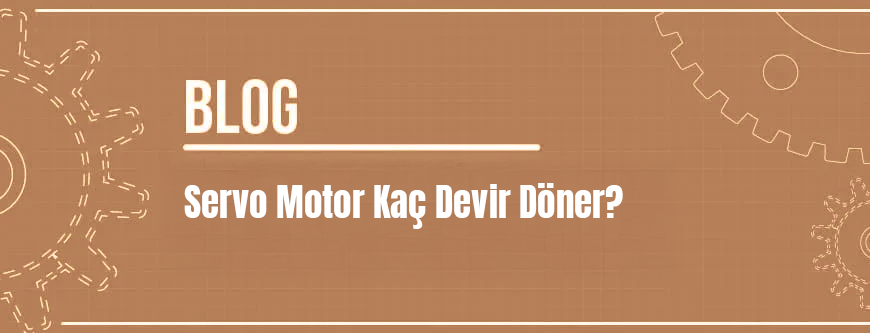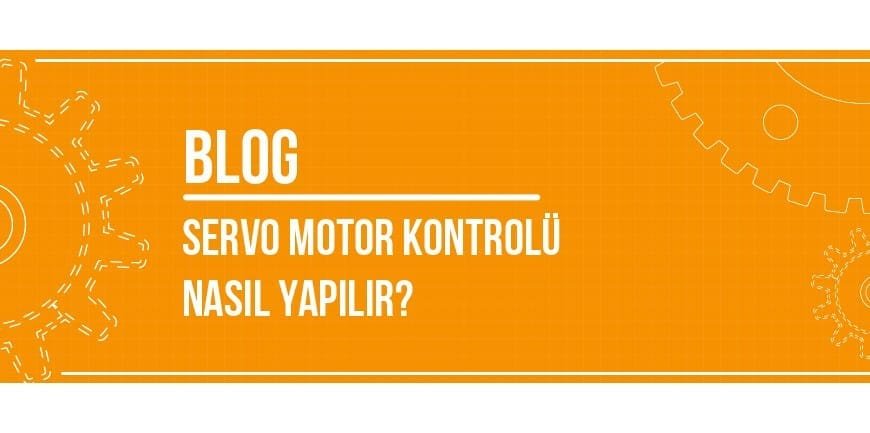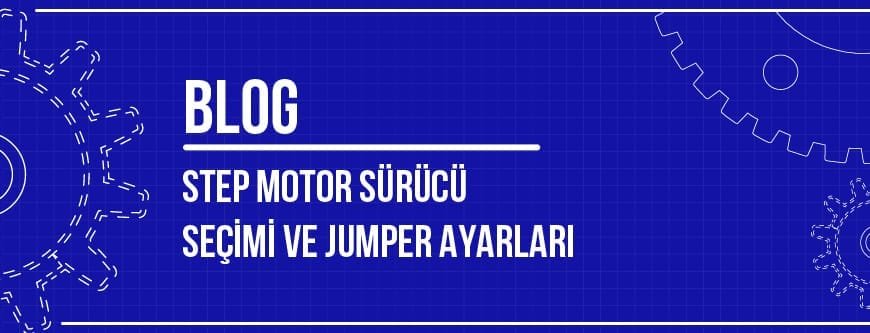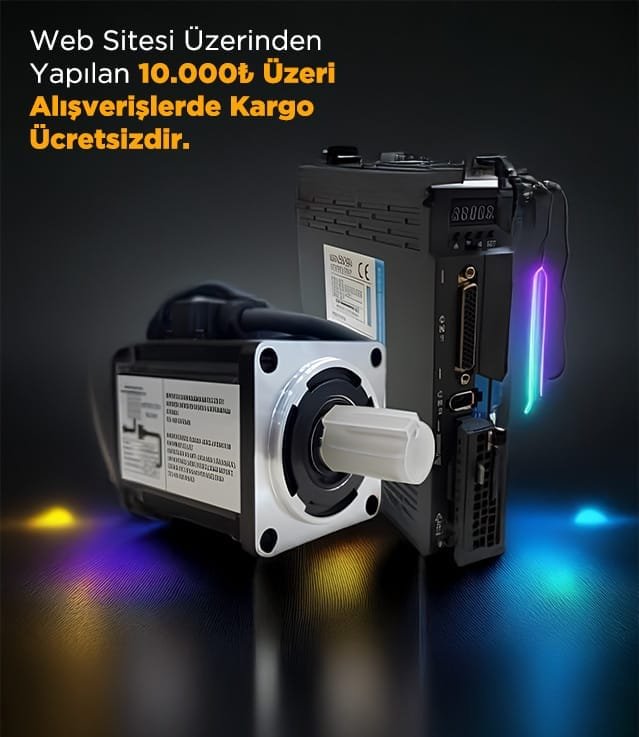
İçindekiler
How Many Revolutions Does a Servo Motor Rotate?
Servo motors are special motors that are preferred for their precise movement capability in industrial automation, robotic systems, CNC machines and many other areas where technological developments are accelerating. One of the most important technical parameters that determine the performance of these motors is the number of revolutions. So, how many revolutions do servo motors rotate and what difference does this number of revolutions make in applications? Let’s elaborate the answers to these questions under headings.
What is a Servo Motor and Why is it Different?
Unlike conventional motors, a servo motor is a type of motor equipped with a feedback system. Thanks to this feedback feature, the servo motor can not only rotate, but also stop at the desired position, move up to a certain angle or rotate at a constant speed. This is the main difference that distinguishes it from ordinary AC or DC motors.
Servo motors consist of control circuitry, drive, motor and sensor (usually encoder) components. Thanks to this combination, servo motors can monitor position, speed and torque parameters in real time and use this data to operate with exceptional precision. This precision makes them particularly indispensable in areas that require millimeter control, such as robot arms, medical devices and automation systems.
Number of Revolutions of Servo Motor
In general, servo motors can operate at a speed between 3,000 RPM and 5,000 RPM. However, this range may vary depending on the type of motor used (AC servo, DC servo, stepper-servo), drive structure and system requirements. For example, some special servo motors used in high-speed production lines can reach up to 6,000 RPM, while motors operating at around 1,000 RPM may be preferred in low-speed but high-torque applications.
While this speed range refers to the rotational speed of the motor, it is also indicative of a wider control area. This is because servo motors not only rotate at a constant speed, but can also react instantly to speed changes. This makes servomotors ideal for many applications, from linear to circular systems.
How to Choose the Cycle According to the Applications?
The number of revolutions in servo motor selection is directly related to the nature of the application. If a system is being built where the motor will rotate at high speed and react in a short time, a motor with 4,000 RPM and above should be preferred. For example, such motors are used in high-speed cutting machines or robotic transportation systems.
On the other hand, if the application requires slow but powerful movement – for example, in CNC lathes or heavy industrial robots – lower speed but high torque servo motors are used. In such applications, control and stability are more important than speed. As a result, no matter how high the speed range of the servo motor, efficient performance cannot be achieved unless it is optimized for the required application.
How to Measure and Control the Speed?
The speed of servo motors is usually measured by an encoder or resolver located on the motor. These sensors convert the axis movements of the motor into an electrical signal that is fed back to the drive. In this way, the current speed, position and direction of the motor are kept under constant control.
By evaluating this data, the servo drive can increase, decrease or maintain the speed of the motor in real time. Thanks to this precise control mechanism, the servo motor can respond instantly to even very small speed changes. Especially in automation systems, this control ensures efficient and error-free operation of production lines.
Effect of RPM on Servo Performance
The maximum output speed of a servo motor is directly related not only to the mechanical limits of the motor but also to the load, drive settings and environmental conditions in the system. If the motor is designed to run at a very high speed but the system is not suitable for it, problems such as overheating, vibration or instability may occur.
On the other hand, motors operating at low speed may require more current to achieve high speed, which reduces energy efficiency. Therefore, the right balance must be established between the speed performance of the motor and the dynamics of the system. When this balance is achieved, the servo motor operates in a long-lasting, quiet, efficient and reliable manner.
Gearbox Usage and Speed in Servo Motors
Another frequently used structure in servo motors are gearboxes. Gearboxes are integrated into the system to increase torque while reducing the output speed of the motor. This is especially advantageous for systems that require high torque but operate at low speed. For example, when a servo motor is running at 3,000 RPM, this speed can be reduced to 300 RPM with the help of a gearbox and the torque value can be significantly increased.
Servo motors with gearboxes are generally preferred in applications such as linear actuator systems, robotic arms and elevator mechanisms. The point to be considered here is that the gearbox selection should be determined according to the application, just like the motor. Gearboxes used in the wrong ratios can both reduce the efficiency and shorten the life of the motor.
Is it possible to increase the number of revolutions?
Yes, the speed of servo motors can be increased within certain limits. This is possible both in software and hardware. The maximum speed limit can be increased by adjusting the parameters of the motor driver. However, this should be done with caution, because if factors such as the thermal capacity of the motor, bearing structure and rotor strength are not taken into account, it can lead to serious failures.
When a speed increase is desired, it must be ensured that the engine is sufficiently cooled and that the mechanical balance of the system is not disturbed. Especially fan-assisted or liquid-cooled systems gain importance at this point. Otherwise, the engine may be damaged in the long term, even if it provides a short-term performance increase.
Conclusion: Correct Use is as Important as the Number of Revolutions
Servo motors have a wide speed range, making them indispensable in many industries. However, simply buying a high-speed motor is not enough. The suitability of that motor for the system, its control capability and cooling solutions need to be well planned. Because servo motor technology is not just about speed; it also means balance, precision and sustainability.
When the right servo motor and the appropriate speed range are selected, the efficiency of the systems increases, the need for maintenance decreases and the production processes become stable. For this reason, the most accurate answer to the question “how many revolutions does the servo motor rotate?” becomes possible with not only technical but also application-specific analysis.
Diğer Blog Yazılarımız








